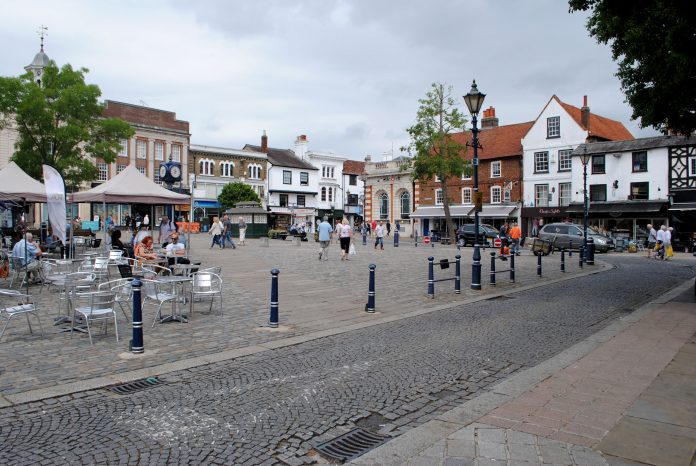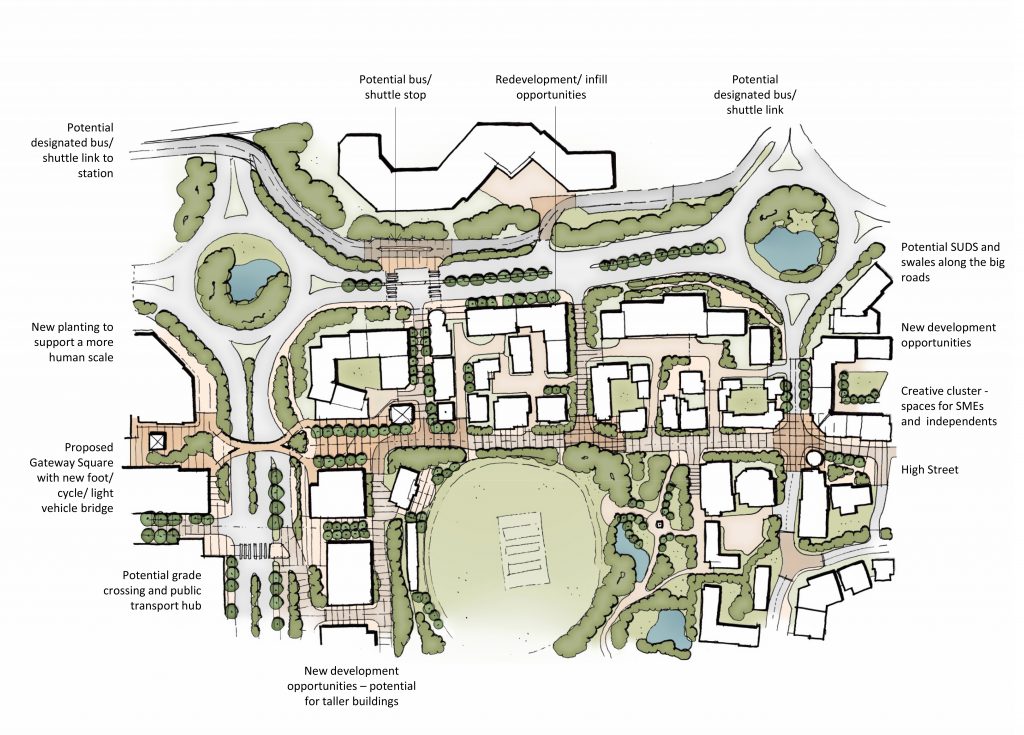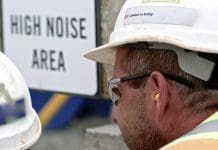High streets are facing challenging times as shopping shifts online and empty units multiply. Earlier this year, a committee of MPs warned that major, long-term changes are needed to secure the future of town centres. David Edwards of Place-Make says that amid the grim forecasts, there are nevertheless reasons to be optimistic
The latest figures show that the real high street is losing the battle with the virtual marketplace – retail sales and occupancy rates were down compared with the same period last year while the ratio of internet sales as a percentage of total retail sales continues to rise.
Of course, this is no surprise – we are getting used to hearing about declining sales on the high street. However, the gradual breakdown of our town and city centres has far-reaching implications beyond shopping; less footfall and active frontages with passive surveillance leads to an increase in antisocial behaviour and a reduced sense of security. It is the beginning of a downward spiral that culminates in the “doughnut” effect – a term that was used to describe the empty downtown of Detroit when the city declared bankruptcy in 2013.
Earlier this year, a select committee of MPs conducted a six-month review of the state of high streets and town centres. Having considered multiple factors from shopping trends and business rates to access and appearance, the inquiry concluded:
- Without urgent action, “some high streets and town centres will disappear altogether”.
- To survive, they need to “adapt, transform and find a new focus”.
- Achieving this will require “large-scale structural change”.
Although this might seem like a desperate cause, if the inquiry’s assertions are unpicked, there are still reasons to be optimistic – even enthusiastic.
It is also worth keeping in mind that overall, we are still shopping; while the value of retail sales was down compared with the previous three months, the quantity (volume) of retail sales increased by 0.6% and the volume of sales in non-food stores was up by 1.9% on last year.
Significantly, though, more and more of these transactions are happening online. This is the extent of “structural change” that is required of our urban centres – a pivot from a traditional retail model to offering something ‘more’.
Fortunately, shopping is not just a transactional activity. It is also an enjoyable social experience that involves recreation, interaction and a sense of being part of a wider community. Based on the inquiry’s findings, these aspects provide the basis for the future high street, with:
- “Activity-based community gathering places where retail is a smaller part of a wider range of uses and activities.”
- “Green space, leisure, arts and culture and health and social care services combine with housing to create a space-based on social and community interactions.”
Essentially, the extent of “structural change” that is required involves a shift from the traditional product-based model to become more people-, place- and experience-centric. The Food Market in Altrincham and the Teenage Market in Bolton are successful examples of creating a new destination that has increased footfall in the wider area akin to the impact of the traditional anchor store. In other instances, passive measures such as public realm improvements, wayfinding, new street furniture, folk and heritage walks and better integration of urban and landscape spaces might be considered to improve access and activity.
Diversifying the traditional town centre offering presents the opportunity to introduce a more vibrant mix of complementary activities that would maintain active frontages and employment-generating activities close to transport links. It is assumed that the precise mix and allowance would vary depending on the specifics of place and context.
There are a number of positive indicators for potential uses that might supplement the high street offering: the Daily Business reports a shortage of quality office space in Glasgow and Edinburgh, particularly for SMEs and creative industries; property agent Lambert Smith Hampton notes a deficit in the availability of studio and production space across the UK; and developer Network Space has observed a critical shortage in the availability of small industrial space across the north of England.
Returning to retail, it is also worth noting that according to Equity Insider, at least 50% of online sales at major high street chains are collected in-store, in particular, 75% of sales at Boots and 71% at Marks & Spencer. So, even after making an online purchase, the majority of customers still visit their nearest store.
As shelves begin to fill with Christmas cards, retailers will be hoping for a better festive period than last year, which was the lowest-performing since 2008, according to the British Retail Consortium. However, as the world becomes more ‘virtual’, there remains a pull towards real experiences that, if harnessed, can breathe new life into our urban centres and support a more robust and sustainable model for the future.
What is clear is that unless these opportunities are embraced by all stakeholders, there is a real concern that our high streets and town centres will soon become relics of a bygone age.
David Edwards
Director
Place-Make
Tel: +44 (0)1462 510 099
Twitter: @place_make
LinkedIn: Place-Make
Facebook: PlaceMake


















